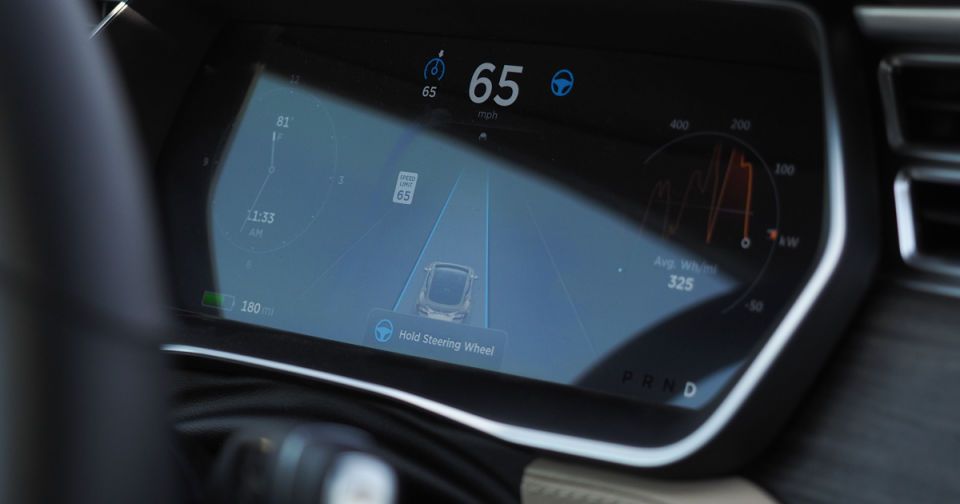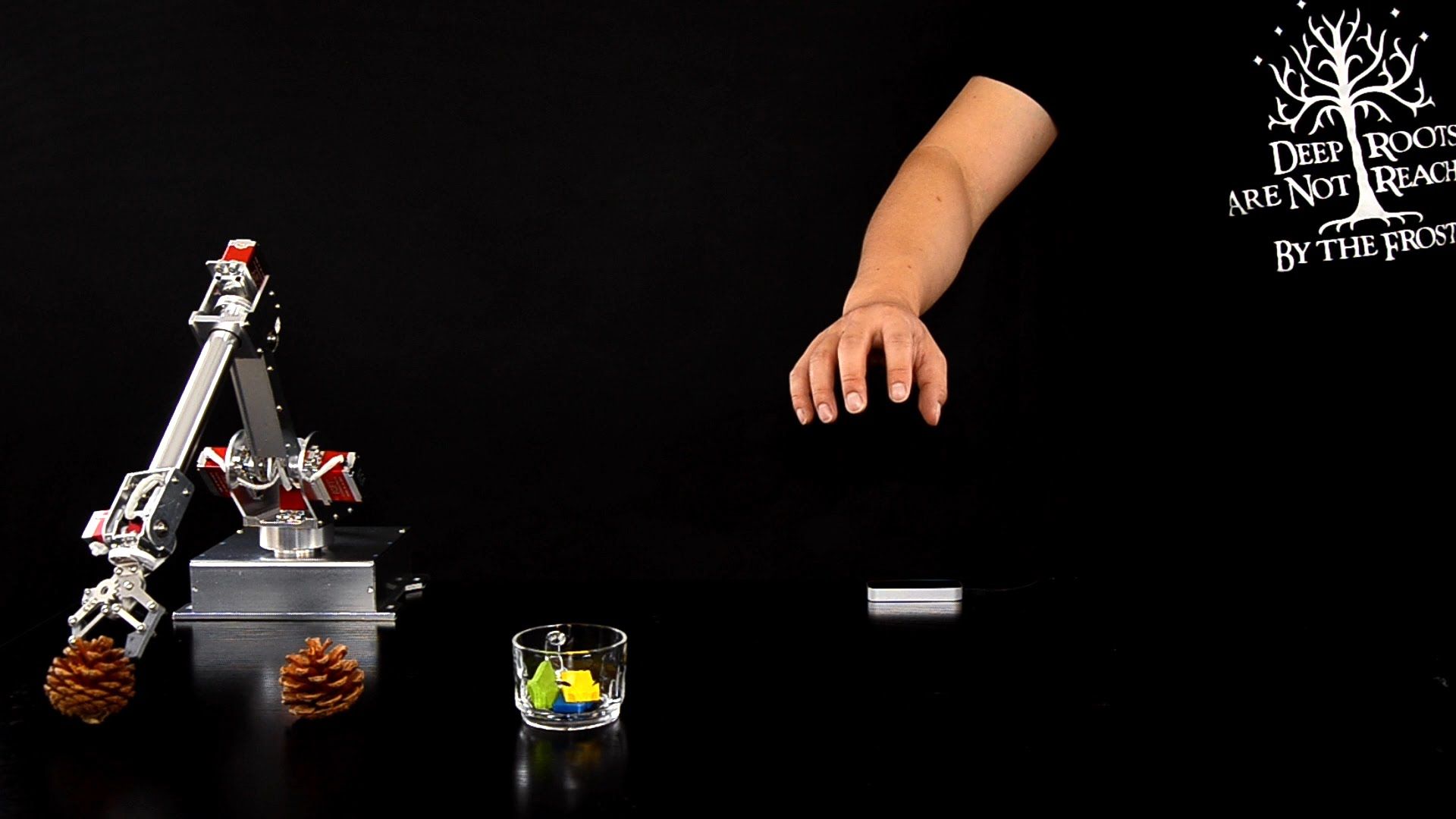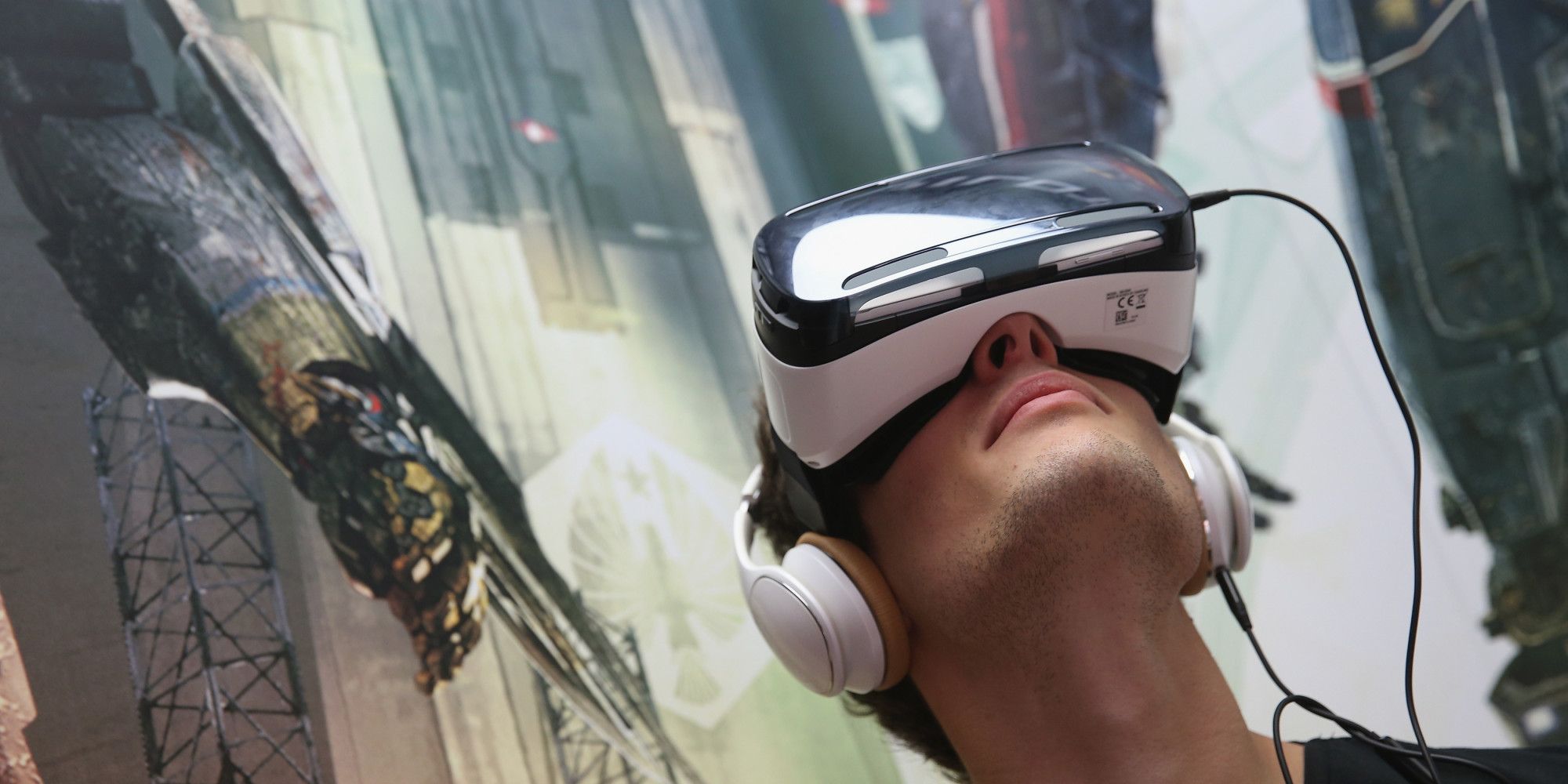At the launch of its latest Autopilot features, Tesla CEO Elon Musk noted that it would roll out the new vehicle capabilities to nations outside the United States once it got regulatory approval. Today Musk tweeted that the company has gotten approval from all those countries (except Japan). Now Tesla owners around the world can enjoy the slightly unnerving feeling of letting their Model S drive itself on the highway. Musk also announced that Autopilot 1.01 would be coming soon with improved fleet learning, better lane tracking on poor roads, curved speed adoption and controller smoothness.
You might not be able to control the 7Bot robotic arm with your mind or your eyes, but at least it’ll only cost you around $350 — cheaper than an iPhone, its creators point out — to get one. Even better, you don’t need to know how to code to program it: just physically guide the arm or use a gesture control device like a Kinect or a Leap motion sensor to make it mimic your movements. In the video below the fold and on its Kickstarter page, you can see it doing calligraphy after a team member’s grandfather physically taught it how. The team also managed make it paint cherry blossoms and do basic mathematics, and we’ll bet you can teach it other productive things, like how to terrorize your cat.
If you prefer the more hands-off approach, you can remotely control it using its 3D visualization app on a computer. And, in case you’re more tech-savvy than the average user, you can program it using the C and C++ open source APIs the 7Bot team provides. In addition to the basic model, the team also offers packages with more features, such as a version with two arms and one that comes with a 3D printer, though they’re also understandably more expensive. According to its campaign page, rewards should start shipping out as soon as January 2016, but as always, it’s best not to treat Kickstarter and other crowdfunding websites as a store.
In the television series Star Trek, virtual reality-chambers called “holodecks” take humans into computer-generated worlds where they interact with avatars — and with each other. Imagine being able to visit a distant planet or Tahiti during your lunch break. In Star Trek, holodecks come into existence in the 24th century and reproduce all sensory perceptions, including touch and smell.
Chambers that replicate the touch and feel of solid materials are still a decade or two away. But virtual reality worlds that are amazingly similar to what we saw in Star Trek are already here. Hundreds of companies are working on virtual reality hardware, software, applications and content. I expect that 2016 will be the year when we start visiting exotic lands from the comfort of our offices and living rooms.
There are several technology developments which are bringing the future to us ahead of the Star Trek schedule. For starters, there is what is called “full-immersion virtual reality.” These are systems that take us out of the real world, into an entirely different digital realm. We hear stereo sounds and see panoramic displays that are so convincing that users lose track of time and space (they also, until very recently, suffered from serious nausea and motion sickness). Facebook’s Oculus Rift is the leading immersive virtual reality (VR) system but numerous others are either on the market or in the works.
As of this month, over 4,000 Americans are on the waiting list to receive a heart transplant. With failing hearts, these patients have no other options; heart tissue, unlike other parts of the body, is unable to heal itself once it is damaged. Fortunately, recent work by a group at Carnegie Mellon could one day lead to a world in which transplants are no longer necessary to repair damaged organs.
“We’ve been able to take MRI images of coronary arteries and 3-D images of embryonic hearts and 3-D bioprint them with unprecedented resolution and quality out of very soft materials like collagens, alginates and fibrins,” said Adam Feinberg, an associate professor of Materials Science and Engineering and Biomedical Engineering at Carnegie Mellon University. Feinberg leads the Regenerative Biomaterials and Therapeutics Group, and the group’s study was published in the October 23 issue of the journal Science Advances. A demonstration of the technology can be seen below.
“As excellently demonstrated by Professor Feinberg’s work in bioprinting, our CMU researchers continue to develop novel solutions like this for problems that can have a transformational effect on society,” said Jim Garrett, Dean of Carnegie Mellon’s College of Engineering. “We should expect to see 3-D bioprinting continue to grow as an important tool for a large number of medical applications.”
Oct. 21, 2015, was the day that Doc Brown and Marty McFly landed in the future in their DeLorean, with time travel made possible by a “flux capacitor.”
New cybersecurity arms treaty compared unfavourably with nuclear treaties:
“In the Cold War and still today, nuclear arms remain in the hands of states, meaning they can usually be counted and their movements observed. Cyberweapons, too, are often developed by countries … but they can also be found in the hands of criminal groups and teenagers, neither of which negotiate treaties.”
The countries are discussing what could be the first arms control accord for cyberspace, and an agreement could be announced as soon as Thursday, according to officials.
“Technology is finally catching up with Landmark Entertainment Group’s big ideas. The global entertainment design firm announced Thursday that it is collaborating with Pavilion of Me to create a virtual reality experience called the Virtual World’s Fair that will launch in 2017.”
Official video for PostHuman — produced by Colliculi Productions.
Animated sci-fi thriller short film featuring the voice of Tricia Helfer (Battlestar Galactica). Directed by Cole Drumb. Produced by Jennifer Wai-Yin Luk.
Production company: Colliculi Productions.
Animation studio: Humouring The Fates.
Voice of Kali: Tricia Helfer.
Voice of Terrence: Ulric Dihle.
Original Music: Neill Sanford Livingston.
Post Production Sound: Kid Dropper Sound.
Final Post Production Sound: Bad Animals.
Final Video Post Production: Lightpress.
Set in an adrenalized future of espionage, assassins, and out of control super science, PostHuman follows a genius hacker and his dog as they help an enigmatic young woman to free the remaining test subject of a black ops ESP test lab.
Ask just about anyone on the street to describe artificial intelligence and odds are, they’ll describe something resembling the futuristic science fiction robot they’ve seen in movies and television shows. However, according to Mathematician, Linguist and Artificial Intelligence Researcher Dr. András Kornai, artificial intelligence is a reality right now, and its impact can be seen every day.
“I’d say 35 percent of the total commerce taking place on Wall Street (right now) is driven by algorithms and it’s no longer driven by humans,” Kornai said. “This is not science fiction. (Artificial intelligence) is with us today.”
What we’ve seen so far in the application of algorithm-based artificial intelligence in the financial sector is just the tip of the iceberg, Kornai said. In fact, you don’t even have to own stock to be affected by it.
“I have designed algorithms that will (determine) your creditworthiness, meaning your creditworthiness is now determined by an algorithm,” he said. “We have substituted human-decision making capabilities in favor of better algorithms to pursue this, and we have given up a huge area of human competence, and money is just one aspect of it.”
Kornai points to advances in algorithm-based medical diagnostics, autonomous cars and military technology as some other areas where artificial intelligence is already at work and poised for further growth. While that growth is presented as a good thing, he believes the subtle infiltration of AI has many people missing the larger picture.
“We are seeing an uptick in medical decisions by algorithms and I’m not opposed to this, as it’s important to have the best possible information in the medical world. And in 10 or 15 years autonomous vehicles will be a big deal,” Kornai said. “In military technology, drones are generally human controlled, but there is intense research toward autonomous ground or air vehicles that will work even if someone is trying to cut off their communication. This is not the future, this is here now.”
According to Kornai, since algorithms are based on statistics, the problem with algorithm-based advances in those areas is the level of error that is inherent to the system. That built-in error may not be able to cause bodily harm, he said, but it can still cause havoc to humanity as a whole.
“A certain amount of error is built into the system in every level of AI. Things work on a statistical basis and they have errors but, on the whole, that’s innocent,” he said. “Algorithms are not capable of hurting people directly. But once it comes to money or it comes to your health or your legal standing, (the potential for errors) is becoming increasingly serious.”
In spite of most people’s image of the future of artificial intelligence, that danger is significantly different than the perils depicted on the big screen, Kornai said. To illustrate that point, he highlighted the gap between algorithmic AI and the state of robotics. While technology has already developed a chess algorithm that can beat the best chess players in the world, a ping-pong playing robot that can beat the world’s best table tennis player has yet to materialize.
“The primary worry is everyday, ubiquitous algorithms, the kind of algorithms that are already around us, posing huge damage,” Kornai said. “This isn’t the Terminator coming along and killing humans. That’s more science fictional.”
Looking to the future, Kornai sees AI making the biggest inroads in the business world. Again, he noted that use of those everyday algorithms may not be widely noticed, but their impact will be significant.
“In the business world today, it’s much easier to start a company and those companies will increasingly be driven by AI,” he said. “Eventually, AI will play a bigger role in the boardroom. It may not be visible to the man on the street, but it will be very visible to the Fortune 500.”
That said, however, there are still broader risks ahead as AI advances, and Kornai said he generally agrees with the concerns that have been voiced of late by Hawking, Gates, Musk and others. Those perils might not jibe with Hollywood’s idea of them, but the effects will still be notable.
“These guys see what’s going on and are doing some far-sighted (thinking). Far-sighted is not science fictional,” Kornai said. “Far-sighted is thinking ahead maybe 10, 15 or 25 years ahead. We’re not talking about affecting our grandchildren, but things that will affect us and increasingly affect our children and grandchildren.”








